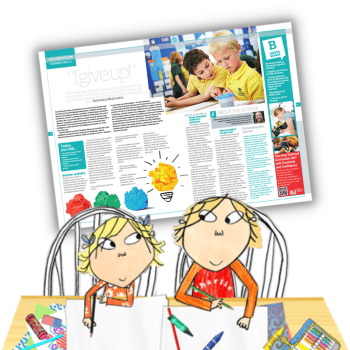If you can begin growth mindset lessons from the moment children start school, you’ll never hear pupils complain of a lesson being ‘too hard’ ever again.
Carol Dweck’s theory of mindsets is one of the most powerful tools teachers have for developing independent, confident and life-long learners. According to Dweck, a professor of psychology at Stanford University, a learner’s mindset describes their belief about the nature of ability.
Her research identifies two kinds of people with broadly different viewpoints. This is people with a growth mindset and those with a fixed mindset.
The former group believe they can develop their intelligence, while the latter see intelligence as innate, i.e. “I was born this way”.
Dweck believes a person’s mindset allows us to predict their resilience and perseverance in the face of challenge. The effectiveness of interventions rolled out widely in the US – designed to encourage a growth mindset – is well evidenced.
From my own work in schools, I have seen the profound effect that teaching children to adopt a growth mindset can have on developing resilience and a positive attitude to learning, and their desire to be challenged – all of which leads to greater progress.
We need to meet a couple of conditions if we’re going to develop mindsets within the classroom. First, we must embed the theory in the culture of the school – through how you speak, structure your lessons and provide learning challenges.
Second, we need to teach it directly to children. You can do this through a series of lessons that explore the themes of failure, challenge and effective learning.
Growth mindset lessons
In this lesson, children will:
- Identify the characteristics of a growth and fixed minfset
- Suggest ideas to help a character develop a growth mindset
- Discuss ideas in small groups
Starter activity
Introduce the concept of mindsets using a story with familiar characters. Charlie and Lola works extremely well. Watch the episode Too Many Big Words until four minutes 43 seconds.
The story is all about Lola starting school and how she enjoys attending. That is until she decides it is too tricky for her. After that, she decides she wants to stay at home.
Using two children in role as Charlie and Lola, create a freeze frame of the characters sitting together about to discuss Lola’s problem. If you are a creative type you can use props or masks.
You may find it useful to discuss the roles children will be playing prior to the start of the lesson. Points for discussion may include:
- How would Charlie and Lola freeze?
- How can you show how they are feeling using your body and face?
Once the children are in their freeze, use a thought bubble over a character’s head to stimulate discussion. Ask the children to discuss with their talk partner:
- How is Lola feeling?
- Why does she feel like that?
Ask the children to feed back. Select pupils to contribute at random, using lollipop sticks or an online random name picker.
Then allow the children to relate how Lola is feeling to their own experience. Ask:
- Have you ever felt like Lola?
- What made you feel like that?













